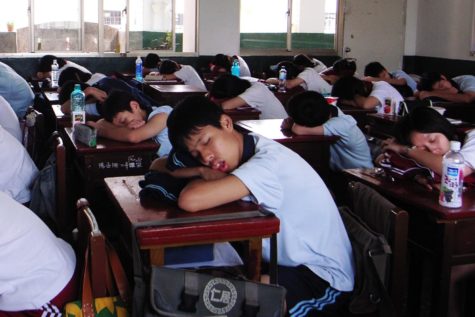Why gifted programs need to change, and how

Gifted programs exist for students who need something challenging beyond their regular curriculum. What are the downsides of those programs, and how should they change? There are a lot of downsides to gifted programs, and there are a lot of ways they need to change to support students.
Funding
Gifted programs should be properly funded. There are not a lot of states that fund them, and out of those states, only a tiny bit fund them 100%. Becton Loveless, an author for the Gifted Education Corner, states that “Only four of the 32 states that provide money for gifted programs fully fund the needs of their students.” Some could argue that they don’t need to be 100% funded, but proper funding can help make these programs better.
Identification
The way of identifying gifted students needs to change. For example, in my personal experience when testing for the gifted program, we took two tests. One was a math test. The other one was a test to see how “creative” you are. This isn’t the best way to identify students, as there wasn’t a lot of time to complete them. Tests are stressful. What if a student misses the cut-off point by a point or two? Overlooking eligible kids is a problem. Danielle Dreilinger, an author for the Hechinger Report, states that “As many as 3.6 million gifted children are being overlooked in school — more than the 3.3 million U.S. public school children already labeled as gifted.” Others might argue that the way of testing doesn’t overlook students. Imagine if you were someone taking a difficult test. It would be difficult, and you might have off days.
If you’re going to have tests to get into the gifted program, there should only be one test used by everyone to give out. With everyone making different tests, it’s very inconsistent. If you got a high enough score at one school, they would put you in the program. If you had that same score at another school, they might not consider you that way. Danielle Dreilinger, an author for the Hechinger Report, states that “This year, Ohio approved 27 different tests for identifying gifted students.” Some people might argue that different tests could be necessary, but it’s easier and better if they’re consistent.
Expectations
There are lots of expectations for these kids, and it can lead to burnout. Burnout can lead to feeling overwhelmed with small tasks, lack of motivation, and more. An article from the Davidson Institute states that “Gifted kid burnout adds a new dimension to the burnout experience because of their unique neurological make-up. Their perfectionism, asynchronous development, and over-excitabilities may feed into the burnout experience in a way that increases the intensity or duration of burnout.” Some may argue that burnout is weakness or childishness, but burnout can happen to anyone. Gifted kid burnout can be a combination of high expectations, lack of motivation, and more.
Gifted programs need change. The way it supports students, the funding, and even the way people test for it all need to change. They are in existence for students who need a challenge beyond the regular classroom. These programs need to change to help support students better.
About the Contributor

Madison Wallace, Staff Writer
Madison Wallace is a senior at Jenison High School. She plans to attend Grand Valley State University in the fall. In her free time, she likes to make...




